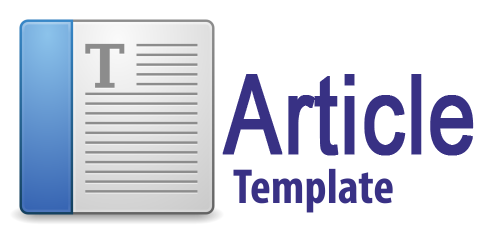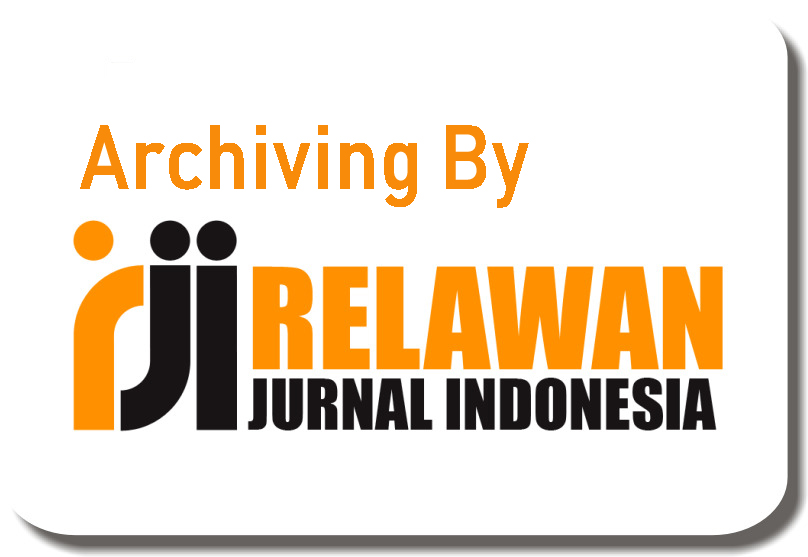Investigating the Correlation Between the Use of AI Writing Tools and EFL Essay Writing Performance
Abstract
The growing integration of AI writing tools in education raises concerns about their influence on EFL students’ writing development. Empirical evidence is scarce, despite the assumptions regarding their advantages. This study investigated the correlation between the utilization of AI tools and essay scores among 23 fourth-semester students enrolled in the English Language Education Study Program at FKIP UNTAN (A1 class, 2024/2025). The data was obtained by distributing a questionnaire regarding the frequency of AI usage and scoring essays using a validated rubric. Pearson's correlation analysis revealed a non-significant, weak correlation (r = -0.078, p = 0.723). Grammarly and QuillBot were frequently employed to enhance grammar, clarity, and coherence, as evidenced by qualitative data. The findings challenge the assumption that the direct improvement of essay quality is an outcome of frequent use of AI tools, suggesting that other factors have a more significant impact on writing outcomes.
Keywords
Full Text:
PDFReferences
Alfaruqy, D., Setyawan, H., & Rohman, T. N. (2022). Exploring first-year EFL students’ problems in essay writing. ELE Reviews: English Language Education Reviews, 2(1), 1–12. https://doi.org/10.22515/elereviews.v2i1.4453
Alharbi, W. (2023). AI in the foreign language classroom: A pedagogical overview of automated writing assistance tools. Education Research International, 2023, 1–15. https://doi.org/10.1155/2023/4253331
Amanda, Elsa, M. S., Nursyahrina, L., & Utami, D. (2023). Quillbot as an AI-powered English writing assistant: An alternative for students to write English. Jurnal Pendidikan Dan Sastra Inggris, 3(2), 188–199. https://doi.org/10.55606/jupensi.v3i2.2026
Anwar, M., Ali, M., Fazal, S., & Ayyaz, S. (2025). AI applications for English language learning. IGI Global Scientific Publishing.
Basu, A. (2025). AI tools for everyone: Your guide to artificial intelligence. Aditya Basu.
Bouchoux, D. E. (2024). Legal research and writing for paralegals (Tenth). Aspen Publishing.
Brown, H. D. (2000). Teaching by principles an interactive approach to language pedagogy (Second). Pearson Education.
Brown, H. D. (2004). Language assessment : Principles and classroom practices. Pearson Education.
Brown, H. D., & Abeywickrama, P. (2019). Language assessment: Principles and classroom practices (H. D. Brown, Ed.; Third). Pearson Education.
Brown, H. D., & Lee, H. (2015). Teaching by principles : An interactive approach to language pedagogy. Pearson Education.
Capinding, A. T. (2024). Students’ AI dependency in 3R’s: questionnaire construction and validation. International Journal of Information and Education Technology, 14(11), 1532–1543. https://doi.org/10.18178/ijiet.2024.14.11.2184
Checkett, G., & Checkett, L. (2010). The write start: Sentences to paragraphs with professional and student readings. (Fourth). Cengage Learning.
Creswell, J. W. (2012). Educational research : Planning, conducting, and evaluating quantitative and qualitative research. Pearson Education.
Creswell, J. W. (2018). Research design 1ualitative, quantitative, and mixed methods approaches. SAGE Publication.
Deshmukh, J. (2024). AI tools for everyone : 119 best AI tools to master everyday tasks. Deshmukh, Jayant .
Dja’far, V. H., & Hamidah, F. N. (2024). Improving English pronunciation skills through AI-based speech recognition technology. Ethical Lingua: Journal of Language Teaching and Literature, 11(2). https://doi.org/10.30605/25409190.747
Dobrin, S. I. (2023). AI and writing. Broadview Press.
Fahmi, S., & Rachmijati, C. (2021). Improving students’ writing skills using Grammarly application for second grade in senior high school. PROJECT (Professional Journal of English Education), 4(1), 69. https://doi.org/10.22460/project.v4i1.p69-74
Fitria, T. N. (2021). QuillBot as an online tool: Students’ alternative in paraphrasing and rewriting of English writing. Englisia: Journal of Language, Education, and Humanities, 9(1), 183. https://doi.org/10.22373/ej.v9i1.10233
Gültekin Talayhan, Ö., & Babayiğit, M. V. (2023). The influence of AI writing tools on the content and organization of students’ writing: A focus on EFL instructors’ perceptions. Journal of Current Debates in Social Sciences, 2(2), 83–93. https://doi.org/10.29228/cudes.71701
Hamilton, J. (2023). QuillBot review: Is it a good tool for authors? Kindlepreneur. https://kindlepreneur.com/quillbot/
Hasanah, I. (2022). An analysis of madrasah aliyah students’ ability in writing recount text. Takuana: Jurnal Pendidikan, Sains, Dan Humaniora, 1(1), 50–58. https://doi.org/10.56113/takuana.v1i1.17
Hasbi, M. et al. (2024). The ways QuillBot enhances English academic writing. Rizquna.
Jashari, L. T., & Fojkar, M. D. (2019). Teachers’ perceptions of developing writing skills in the EFL classroom. ELOPE: English Language Overseas Perspectives and Enquiries, 16(2), 77–90. https://doi.org/10.4312/elope.16.2.77-90
Johnson, R. B., & Christensen, L. (2014). Educational research : Quantitative, qualitative and mixed approaches. SAGE Publications.
Mardesci, H. (2020). The effect of online learning on university students’ learning motivation. JPP (Jurnal Pendidikan Dan Pembelajaran), 27(1), 42–47. https://doi.org/10.17977/um047v27i12020p042
Marzuki, Widiati, U., Rusdin, D., Darwin, & Indrawati, I. (2023). The impact of AI writing tools on the content and organization of students’ writing: EFL teachers’ perspective. Cogent Education, 10(2).
Meechan, D. (2024). Generative AI for students: The essential guide to using artificial intelligence for study at university. SAGE Publications.
Miller, M. (2025). Using artificial intelligence absolute beginner’s guide. Pearson Education.
Nunan, D., & Choi, J. (2023). Clarity and coherence in academic writing: Using language as a resource. .Routledge.
Nurmayanti, N., & Suryadi, S. (2023). The effectiveness of using Quillbot in improving writing for students of English education study program. Jurnal Teknologi Pendidikan : Jurnal Penelitian Dan Pengembangan Pembelajaran, 8(1), 32. https://doi.org/10.33394/jtp.v8i1.6392
P, G., & Dsouza, P. K. (2024). Artificial intelligence tools in academic writing assistance: a comprehensive study of emerging tools and techniques. IJIRT, 11(3), 1383–1387.
Pratama, Y., Fridolini, F., & Pitaloka, R. M. (2025). The impact of AI QuillBot in improving student writing ability to write argumentative essays. English Review: Journal of English Education, 13(1), 215–222. https://doi.org/10.25134/erjee.v13i1.9746
Rahmi, W., Sada, C., & Riyanti, D. (2021). An analysis of students’ problems in writing essays. Syntax Literate ; Jurnal Ilmiah Indonesia, 6(6).
Redman, P., & Maples, W. (2017). Good essay writing a social sciences guide (Fifth Edition). SAGE Publications India.
Rezeki, Y. S. (2017). Collaborative written feedback experience: A case study of Indonesian EFL students in an essay writing class. International Journal of Educational Best Practices, 1(2), 24. https://doi.org/10.31258/ijebp.v1n2.p24-37
Salam, U. (2025). The integration of ChatGPT in English for foreign language course: elevating AI writing assistant acceptance. Computers in the Schools, 42(2), 145–165. https://doi.org/10.1080/07380569.2024.2446239
Schober, P., Boer, C., & Schwarte, L. A. (2018). Correlation coefficients: Appropriate use and interpretation. Anesthesia & Analgesia, 126(5), 1763–1768. https://doi.org/10.1213/ANE.0000000000002864
Setyani, E. D., Bunau, E., & Rezeki, Y. S. (2023). The influence of Grammarly towards Indonesian EFL students’ first-degree thesis writing confidence. Elsya : Journal of English Language Studies, 5(1), 54–67. https://doi.org/10.31849/elsya.v5i1.6773
Setyowati, L., Agustina, F., Sukmawan, S., El-Sulukiyyah, A. A., & Mabaroh, B. (2020). The students’ problems and solutions in writing an argumentative essay on gender issue. Journal of English Language Teaching and Linguistics, 5(3), 279. https://doi.org/10.21462/jeltl.v5i3.424
Strongman, L. (2013). Academic writing: A handbook for international students. Routledge.
Tribble, C. (2005). Language teaching writing. Oxford University Press.
Wulandari, S., Laeli, A., & Astutik, I. (2024). Using Grammarly software to check the problems in essay writing: EFL pre-service teachers’ perceptions. New Language Dimensions, 5(1), 12–22. https://doi.org/10.26740/nld.v5n1.p12-22
Yu, Z. (2024). The study of the correlation between AI-assisted EFL writing frequency and writing anxiety among Chinese university students. Academic Journal of Humanities & Social Sciences, 7(7). https://doi.org/10.25236/AJHSS.2024.070702
Yundayani, A., Susilawati, S., & Chairunnisa, C. (2019). Investigating the effect of Canva on students’ writing skills. English Review: Journal of English Education, 7(2), 169–176.
Zinkevich, N. A., & Ledeneva, T. V. (2021). Using Grammarly to enhance students’ academic writing skills. Professional Discourse & Communication, 3(4), 51–63. https://doi.org/10.24833/2687-0126-2021-3-4-51-63
DOI: https://doi.org/10.31004/jele.v10i5.1445
Refbacks
- There are currently no refbacks.
Copyright (c) 2025 Nuha Faadhilah, Endang Susilawati, Sumarni Sumarni

This work is licensed under a Creative Commons Attribution-ShareAlike 4.0 International License.



